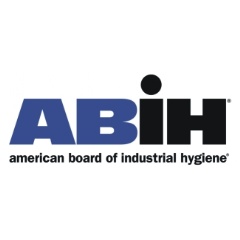Preventing Occupational Exposure Risks to 1-Bromopropane
The American Board of Industrial Hygiene® (ABIH®) reminds workers and industry of the need to protect against exposure to potentially harmful chemical compounds.
Workers in a number of industries can be exposed to 1-BP by breathing vapors or mists that contain the chemical as well as through skin contact.
In March of this year, the U. S. Environmental Protection Agency (EPA) released for public comment and peer review a draft risk assessment for 1-Bromopropane (1-BP). The draft assessment of 1-Bromopropane, also known as n-propyl bromide, was conducted as part of EPA’s Toxic Substances Control Act (TSCA) Chemical Work Plan assessment effort.
According to the EPA, 1-BP showed acute risks to women of childbearing age from adverse developmental effects. Other non-cancer and cancer health risks were identified for workers with repeated and chronic exposures, including neurotoxicity; kidney, liver and reproductive toxicity; and lung cancer.
The Occupational Safety & Health Administration (OSHA) reports that the use of 1-BP has increased in the workplace over the past 20 years. OSHA states that 1-BP is often found in products used in vapor and immersion degreasing operations for cleaning metals, plastics, and electronic and optical components; adhesive spray applications; dry cleaning; and solvent sprays used in operations like asphalt production, aircraft maintenance and synthetic fiber manufacturing.
“Workers in a number of industries can be exposed to 1-BP by breathing vapors or mists that contain the chemical as well as through skin contact,” said Susan Ripple, CIH® and Chair of ABIH®. “Because the use of 1-BP is pervasive in so many industries, evaluating and communicating worker exposure risks to 1-BP is important to protect people’s health. Certified Industrial Hygienists are uniquely qualified to conduct these types of risks assessments and protect workers from exposure. Core competencies of the CIH® program include air sampling and instrumentational analysis; chemical and biohazards; engineering controls and ventilation; health risk analysis and hazard communication; and work environments and industrial processes. This knowledge and the proper use of personal protective equipment can be instrumental in reducing exposure risks to 1-BP and other potential hazards.”
To learn more about the American Board of Industrial Hygiene®, Certified Industrial Hygienist® credential or to locate a CIH® to perform industrial hygiene services, please visit www.ABIH.org, email abih@ABIH.org or call (517) 321-2638.
About the American Board of Industrial Hygiene ®
Since 1960, ABIH®, a not-for-profit corporation, has been the world’s largest organization for certifying professionals in the practice of industrial hygiene. ABIH® is the premier credentialing body responsible for ensuring high-quality certification including education, experience, examination, certification maintenance and ethics enforcement. Currently, more than 6800 people in 32 countries are certified to use the CIH® designation.
( Press Release Image: https://photos.webwire.com/prmedia/12710/204169/204169-1.jpg )
WebWireID204169
- Contact Information
- Paul Cochrane
- President
- Cochrane & Associates, LLC
- Contact via E-mail
This news content may be integrated into any legitimate news gathering and publishing effort. Linking is permitted.
News Release Distribution and Press Release Distribution Services Provided by WebWire.
